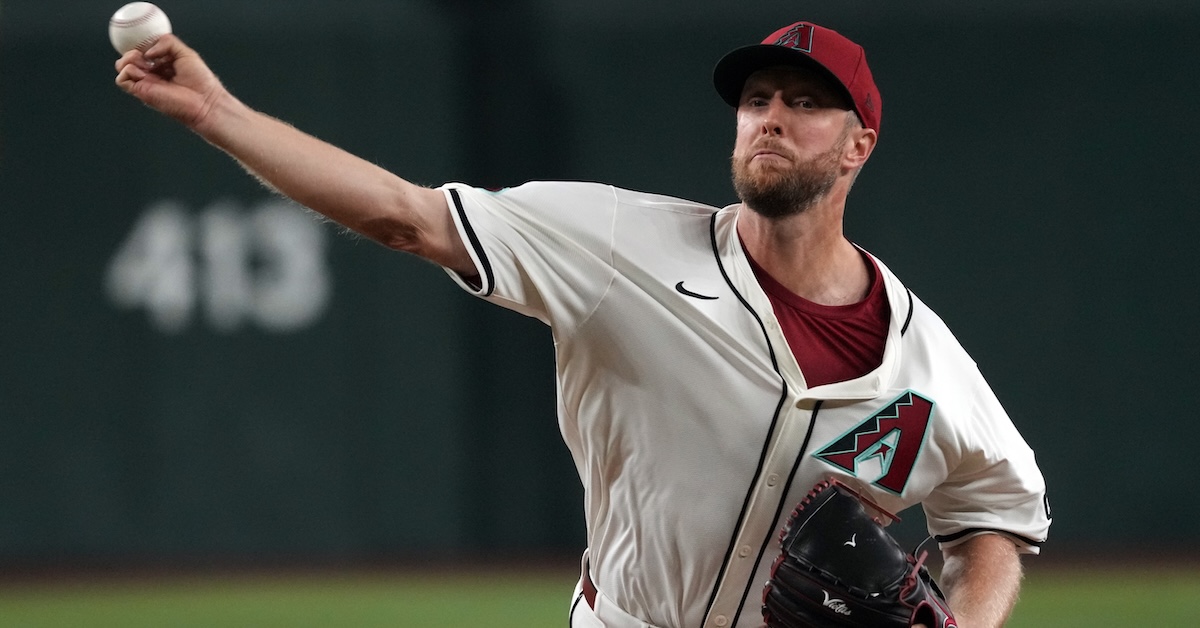Merrill Kelly Is a Trade Target Who Thrives With Pitchability and Guile

Merrill Kelly is having a rock-solid season. Over 21 starts comprising 122 innings, the 36-year-old right-hander has a 9-6 record to go with a 3.32 ERA and a 3.48 FIP. Those numbers are pretty much par for the course. Over the past three-plus seasons — all with the Arizona Diamondbacks — Kelly has made 97 starts and gone 39-22 with a 3.42 ERA and a 3.75 FIP. Neither overpowering nor of ace quality, Kelly is nonetheless a good pitcher who adds value to a big league rotation.
He could soon be taking the mound for a different team. Signed by the D-backs in December 2018 following a four-season stint in the KBO, Kelly is now on the doorstep of free agency; should Arizona decide to be sellers at the deadline, he could find himself in another team’s uniform come August 1. If that happens, the club that acquires him would be getting a known commodity. He has put up between 2.2 and 3.2 WAR in four of his last five seasons, with the exception coming last year, when injuries limited him to just 13 starts and 73 2/3 innings. His overall big league ledger reads: 62-49, 161 starts, 946 1/3 innings, 3.76 ERA, 3.97 FIP, 13.9 WAR.
With free agency looming, I spoke with the veteran hurler earlier this year about his approach to pitching, his evolution on the mound, and his steady performance since returning stateside.
“That’s an interesting question,” Kelly replied when asked how how he gets hitters out. “I would say that I do it in a lot of different ways. Ideally, I would like to get them out on as few pitches as possible. I guess you’d consider that a little bit more old school.
“Now, the strikeout is a big thing in the game,” continued Kelly, whose 92.1-mph fastball velocity ranks in just the 17th percentile among his contemporaries. “Over the last couple of years I’ve kind of picked and chosen my spots to go for strikeouts a little more than I did before. Part of that is because my stuff has evolved. I have a couple more weapons to get strikeouts than I did earlier in my career.”
The righty’s professional career dates back to 2010 when he was drafted in the eighth round by the Tampa Bay Rays out of Arizona State University. As for the weapons he has at his disposal, his repertoire currently runs six deep. His usage this season — per Statcast — has been changeup 25.5%, four-seamer 25.3%, cutter 20.7%, sinker 12.7%, curveball 8.8%, and slider 6.9%.
Kelly’s cutter, which “came along towards the end of Korea,” has been especially effective. Thrown with similar frequency to right- and left-handed batters alike, the offering has elicited a .125 batting average and a .278 slugging percentage. His lesser-used slider, which became part of his arsenal in 2023, has been even more dominant. He throws it exclusively to same-sided batters, who are batting .100 and slugging .133 against it.
And then there is his most-used pitch. Kelly has thrown 487 changeups — 300 to lefties and 187 to righties — to the tune of a .176 average and a .275 slugging percentage. Moreover, it has a 34.0% whiff rate, the highest among his offerings.
Scouting reports — both the ones found on an iPad and those that exist within his memory bank — play an important role in how he attacks hitters.
“The longer I’ve been in the league, the more I’ve been able to not only get to know the hitters, but also sift through the data on what they do well and what they don’t do well,” he said. “I know where the swing-and-miss is, whereas earlier in my career I was basically just trying to get outs.”
By and large, simply getting outs remains his primary goal. With a 24.2% strikeout rate (22.2% for his career), Kelly still relies a lot on his ability to induce weak contact. Even when he is trying to miss bats, his success comes more from guile than from pure power.
“I look more at where their swing-and-miss is, as opposed to where my pitches get swing-and-miss,” explained Kelly, whose 81st-percentile chase rate is indicative of a pitcher who tunnels and sequences well with a varied mix. “I really don’t even know what my best swing-and-miss [pitch] is. I guess it would probably be my changeup; my fastball isn’t above average by any means, and the cutter isn’t a swing-and-miss pitch.
“I need to do my homework and know where I can go in certain situations,” Kelly added. “I need to know where I can go that’s safe, regardless of what I’m trying to do. If I’m behind in the count, I’m trying to go to the safer location to increase my odds of getting weak contact. If I’m ahead, I’m also going to be picking pitches and locations that are most advantageous to getting outs. I’m not what you’d call a power pitcher, so I need to be smart with what I’m doing out there on the mound.”
David Laurila grew up in Michigan's Upper Peninsula and now writes about baseball from his home in Cambridge, Mass. He authored the Prospectus Q&A series at Baseball Prospectus from December 2006-May 2011 before being claimed off waivers by FanGraphs. He can be followed on Twitter @DavidLaurilaQA.
Jays need this guy
most teams need this guy!